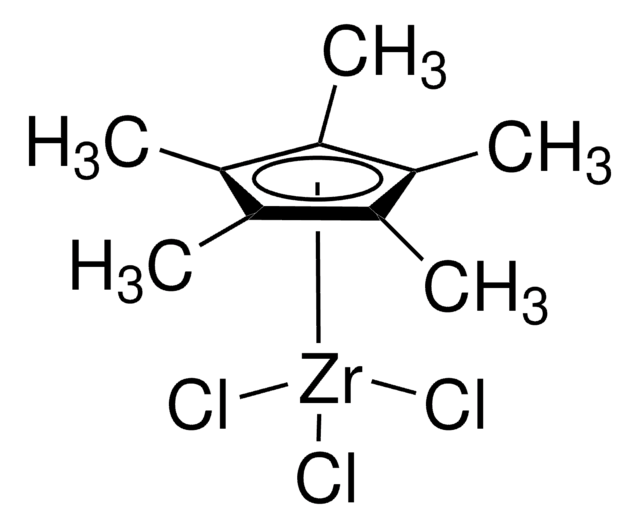346101-M
Androgen Receptor, His•Tag®, Human, Recombinant, S. frugiperda
recombinant human, expressed in S. frugiperda
Synonym(s):
AR, Human, Recombinant, Dihydrotestosterone Receptor, Human, Recombinant
Sign Into View Organizational & Contract Pricing
All Photos(1)
About This Item
UNSPSC Code:
12352202
Recommended Products
General description
Research area: CELL CYCLE
Recombinant, human androgen receptor (AR) fused at the N-terminus to a Flag-Tag sequence and at the C-terminus to His•Tag sequence, expressed in S. frugiperda insect cells expressed using a baculovirus expression system, and purified by affinity chromatography. It is located at X chromosome and is expressed in various tissues. It consists of three primary functional domains: the N-terminal transcriptional regulation domain, the DNA binding domain (DBD), and the ligand binding domain.
Recombinant, human androgen receptor (AR) fused at the N-terminus to a Flag-Tag sequence and at the C-terminus to His•Tag sequence, expressed in S. frugiperda insect cells expressed using a baculovirus expression system, and purified by affinity chromatography. It is located at X chromosome and is expressed in various tissues. It consists of three primary functional domains: the N-terminal transcriptional regulation domain, the DNA binding domain (DBD), and the ligand binding domain.
Biochem/physiol Actions
The androgen receptor (AR) has significant biological effects on bone, muscle, prostate, adipose tissue, as well as on the reproductive, cardiovascular, immune, neural, and haemopoietic systems.
The activity of androgen is mediated by the binding of the intracellular androgen receptor which, when activated, translocates to the nucleus and modulates specific gene transcription by interaction with cis-acting hormone response elements in the target genes.
The activity of androgen is mediated by the binding of the intracellular androgen receptor which, when activated, translocates to the nucleus and modulates specific gene transcription by interaction with cis-acting hormone response elements in the target genes.
Warning
Toxicity: Standard Handling (A)
Unit Definition
1.0 unit is equivalent to 1 ng protein. 20 units are sufficient for a gel-mobility shift assay and 100 units are sufficient for a protein-protein interaction assay.
One unit is defined as 1 ng purified protein.
Physical form
In 100 mM KCl, 20 mM Tris-HCl, 1 mM DTT, 200 µM EDTA, 20% glycerol, pH 8.0.
Reconstitution
Following initial thaw, aliquot and freeze (-70°C).
Other Notes
Chen, G., et al. 2005. Prostate63, 395.
Estebanez-Perpina, E., et al. 2005, J. Biol. Chem.280, 8060.
Gao, S., et al. 2005. Mol. Endocrinol.19, 1792.
Hillmer, A.M., et al. 2005. Am. J. Hum. Genet.77, 140.
Kinoshita, M., et al. 2005, Int. J. Urol.12, 390.
Lim, J.T., et al. 2005. Proc. Natl. Acad. Sci. U.S.A.102, 5156;
Marques, R.B., et al. 2005. Int. J. Cancer117, 221;
Metzger, E., et al. 2005. Nature437, 436;
Murthy, S., et al. 2005. Prostate64, 362;
Chang, C., et al. 1992. Proc. Natl. Acad. Sci. USA89, 5946.
Estebanez-Perpina, E., et al. 2005, J. Biol. Chem.280, 8060.
Gao, S., et al. 2005. Mol. Endocrinol.19, 1792.
Hillmer, A.M., et al. 2005. Am. J. Hum. Genet.77, 140.
Kinoshita, M., et al. 2005, Int. J. Urol.12, 390.
Lim, J.T., et al. 2005. Proc. Natl. Acad. Sci. U.S.A.102, 5156;
Marques, R.B., et al. 2005. Int. J. Cancer117, 221;
Metzger, E., et al. 2005. Nature437, 436;
Murthy, S., et al. 2005. Prostate64, 362;
Chang, C., et al. 1992. Proc. Natl. Acad. Sci. USA89, 5946.
Legal Information
CALBIOCHEM is a registered trademark of Merck KGaA, Darmstadt, Germany
HIS TAG is a registered trademark of Merck KGaA, Darmstadt, Germany
Storage Class Code
10 - Combustible liquids
WGK
WGK 1
Certificates of Analysis (COA)
Search for Certificates of Analysis (COA) by entering the products Lot/Batch Number. Lot and Batch Numbers can be found on a product’s label following the words ‘Lot’ or ‘Batch’.
Already Own This Product?
Find documentation for the products that you have recently purchased in the Document Library.
Androgen Receptor Structure, Function and Biology: From Bench to Bedside
R Davey and M Grossmann
The Clinical Biochemist. Reviews / Australian Association of Clinical Biochemists, 37(1) , 3?15-3?15 (2016)
Our team of scientists has experience in all areas of research including Life Science, Material Science, Chemical Synthesis, Chromatography, Analytical and many others.
Contact Technical Service








